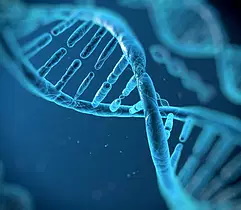Updated: Aug 6, 2020
GeneSeek, the company doing the initial DNA analysis for USYAKS will accept properly collected yak DNA in four sample types: two different hair sample methods, blood and tissue. The choice is yours. Ordering materials and equipment to take the samples depending on which method is selected and their associated costs are the responsibility of the yak owner. The following provided the basic information needed for each form of collection. Method 1: Hair sent in an envelope – This method provides usable DNA providing the individual collecting the DNA is careful to follow the directions. Contamination and insufficient amounts of DNA are the reasons for failure. The following directions should help you to successfully collect a hair sample.
- Wash your hands.
- Clean the area removing any loose hair, dirt or manure.
- Pull (DO NOT CUT) 60 or more hair strands at the base (root) of the tail. Pliers can be used. Grasp a 4. Examine the hair for the presence of root bulbs. This is where the DNA used in the test is located. If most of the pulled hair lack root bulbs, discard the hair sample and try again. Your goal is to have 60 hairs with root bulbs present.
- Do not trim the hair. Keep root bulbs aligned. You may tape the sample to an index card if you are careful to not touch the root bulbs or tape them. Do not touch the root ends of the hair sample; you will contaminate it with your own DNA
- Hair samples must be placed in a paper envelope. Do not use a plastic bag as the sample must be able to breathe.
- Before placing your hair sample in the envelope, write the following on the outside
- Farm Prefix: __________
- Owner:
- Telephone #:_______________
- Email: ____________________
- Yak Name: _________________________
- Gender: M F
- Birth date: ____________
- USYAKS ear-tag: ________________( USYAKS will fill this in)
- IYAK ear-tag if applicable: __________________
- Date collected: ___________________________
Do not trim the hair; keep full length. Keep root bulbs aligned (together). You may tape the sample to an index card if you are careful to not touch the root bulbs or tape them. Do not touch the root ends of the hair sample; you will contaminate it with your own DNA 8. Repeat for each additional animal being sampled. When sampling several animals in the same session, be very careful that your hands are clean and there is no hair or contamination from the previous sample. 9. Send sample envelopes to USYAKS. Method 2: Hair on a hair card – The difference between this collection method and Method 1 is that the hair collected is secured to a “hair card” designed for DNA collection use. You can order hair cards online by logging in to www.igenity.com. There you will need to register and place your order. Once you have the hair cards, follow the steps used for Method 1 and attach the hair to the cards using the directions provided. Place your card in an envelope with the same information as on the envelope for Method 1. Method 3: Blood – This method requires the owner to obtain several drops of blood using a syringe which are placed on a special blood card for DNA analysis. Since only several drops are needed collection of the blood is quite easy. However, you will first need to order the blood cards. To do this log in to www.igenity.com. There you will need to register and place your order. You can purchase syringes and needles online or at your local feed/livestock supply store. Never reuse a syringe or needle on different yaks as they will be contaminated with the DNA of other yak and result in invalid DNA results.
- Be sure to wash your hands and brush clean the area where you are collecting the blood in order to prevent material/DNA contamination.)
- Follow the directions provided with the DNA collection blood cards and then again place the blood card for each yak in an envelope with the same data on it as Method 1. This data is important to prevent any tracking problems and to link the DNA sample to the USYAKS Registration Number which is assigned by the Director before the sample is sent to GeneSeek for analysis.
Method 4: Tissue Sample – This method is quite simple and fool-proof. To do this you will need to purchase an Allflex Tissue Sampling Applicator (TSU) ear punch and tissue sampling units to collect the tissue in. The TSU may be purchased at most veterinary supplies and the tissue sampling units can be purchased by going to www.igenity.com. There you will need to register and place your order. You will also need to be able to secure your yaks head (squeeze chute, headgate or tied very tightly) so you can collect the sample from the yak’s ear. The directions are in the sample kit and it is a very quick process once the yak is secured.
- The tissue sampling units come in boxes of ten and have bar codes to stick on each sample unit. Look for the bar codes on the folded down side of the cardboard sample unit holder in the box.
- Make a copy of the following form and include it with your samples.
- If you have used an entire box of samples, then send the samples in the box with your ranch name and phone number written on the outside of the box.
- Whether you are sending a few samples in a padded envelope or an entire box BE SURE TO INCLUDE a copy of the registration form which links the sample to the correct yak.
Once collected, the sample should be mailed to Ruth Higdon 5897 County Road 23 Ridgway, CO 81432

